During the past year, revolvers have gotten a lot of attention. The introduction of the Taurus AirLite six-shot revolver, basically a six-shot J frame, was interesting. Ruger introduced a seven-shot 357 Magnum version of the GP100. The revolver, it seems, continues to interest the self-defense shooter who wants his or her carry handgun to agree with the Keep It Simple Stupid (KISS) maxim. We have done reports on revolvers and on self-loading pistol magazines, but we’ve never tested revolver speedloaders. It seemed long overdue. We got together a team of revolver shooters, collected a number of revolvers, and ordered a range of revolver speedloaders. While the basic design of all speedloaders is similar, we discovered that there are important differences in the speedloaders that will be important to the user. Whether the speedloader is used for competition or defense, we think the reader who carries a revolver would be well advised to carry a speedloader, master the technique to deploy it, and choose the device well.

Test Procedure
We examined the speedloaders for fit, finish, ease of loading and a solid lock on the cartridges. We executed several speed loads with each design, using both Lyman snap caps and loaded hollowpoint and serrated-nose type cartridges. We also dropped the speedloaders from a height of five feet three times, or until they lost their cartridges. Speedloaders are usually dropped on the ground, unloaded, after the revolver is loaded, and they should not crack when dropped. We also feel that it is important that the speedloader retain its gun load if the speedloader is dropped on the ground during a fumbled load. Then you may lift the speedloader up again and finish the load. If the cartridges are lost when the speedloader is dropped, and you have to pick them up one at a time, your battle will probably be over.

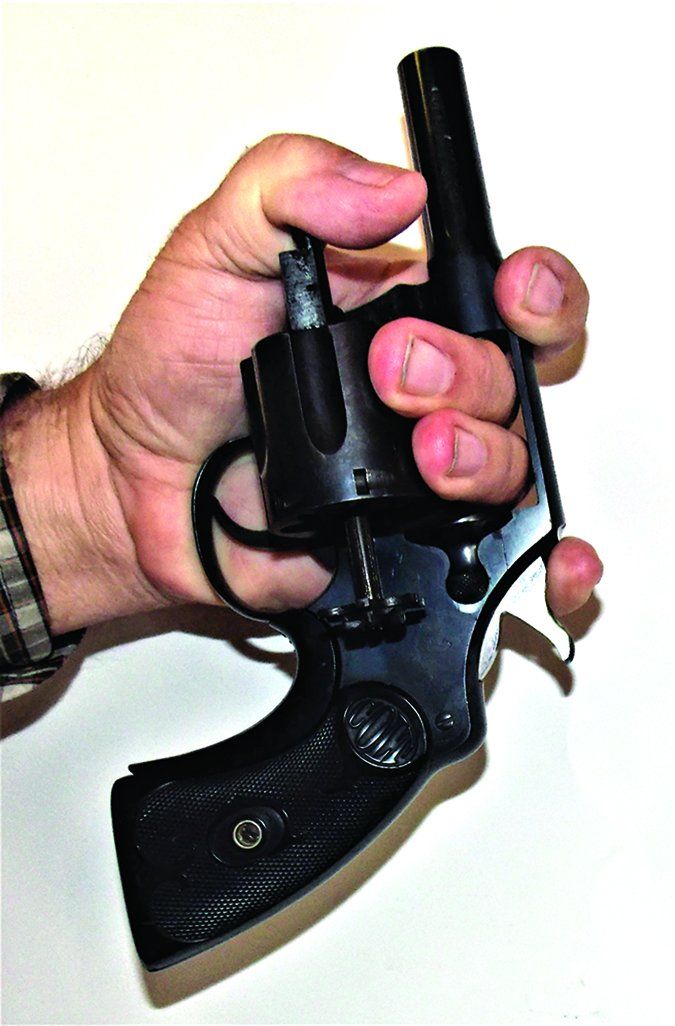
To execute the speed loads, we used a proven technique as taught by one of our raters, an NRA- and state-certified instructor. The revolver is fired empty and then passed to the weak-side hand. As the handgun is passed to the left hand, the right thumb opens the cylinder. The left hand takes the handgun and the fingers press the cylinder out as the left-hand thumb presses the ejector rod to eject the spent shells. The muzzle must be pointed upward as the cartridges are ejected. The muzzle is then pointed downward. The right hand has retrieved the speedloader and the speedloader is guided to the cylinder. It is important that the fingers guide the bullet nose into the chamber. If the speedloader is guided by the release knob, the hold isn’t as stable and it is more difficult to load the cylinder. After the cartridges are loaded into the cylinder, in the case of the HKS, 5 Star, and Pachmayr, the action knob is turned to release the cartridges. The Safariland and Speedbeez are simply pressed forward to release their cartridges. The speedloader is allowed to fall away.
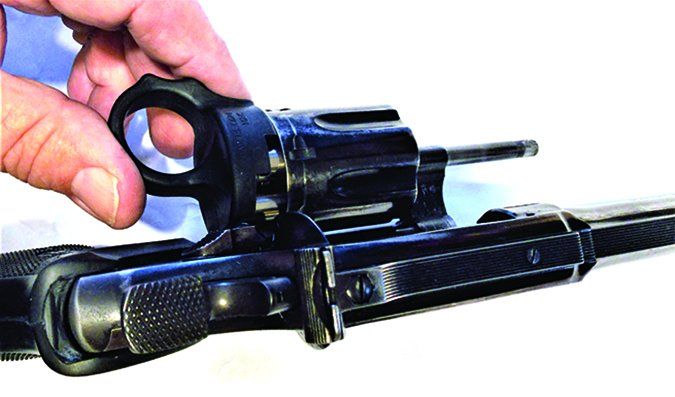
The Maxfire’s unique design demands a different procedure. We felt that this procedure is not as fast as the others, but it is what it is. The revolver is fired empty and then the spent cases are ejected. The right hand maintains control as the barrel is tilted upward and the right thumb hits the cylinder release. The left hand strikes the ejector rod and ejects the spent shells. The barrel is then tilted down as the Maxfire is brought to the cylinder. Contrary to what you would expect from seeing the large ring on this rubber speedloader, the finger doesn’t go inside the ring. The ring is held in the palm, oval out, to guide the gun load into the chamber. This goes smoothly enough. Once the revolver is loaded, the Maxfire is pulled to the left and off the cylinder. If you have not practiced, you will pull the cartridges back out of the cylinder. However, for those who practice, this is a very fast reload, as far as inserting the speedloader and then drawing the speedloader away. We found that the action could be fast, but the need to keep the revolver in the right hand seems unfamiliar. Here’s what we thought about each speedloader.

HKS Speedloaders
GUN TESTS GRADE: A (Best Buy)
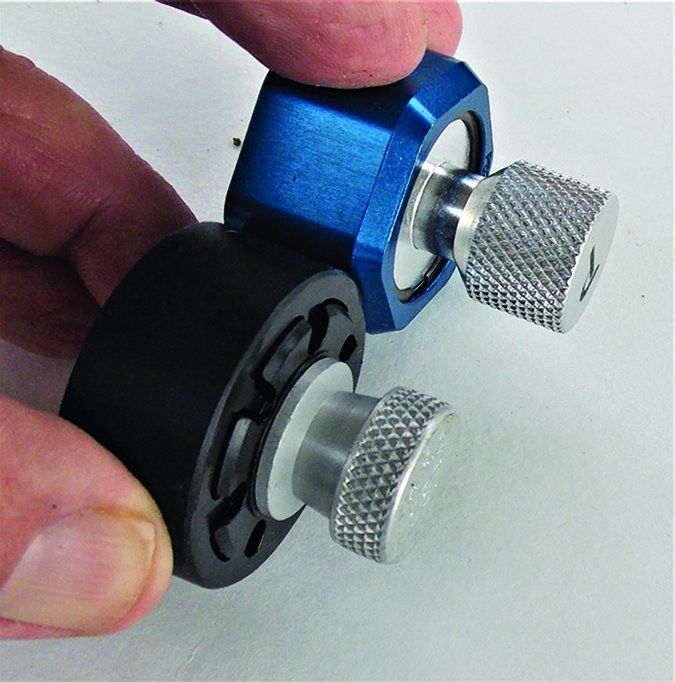
We tested with four types of HKS speedloaders, two of each types, with identical results in each case. They accepted 38 Special/357 Magnums in 5-, 6-, and 7-shot capacities and cost about $8 each. We also used a five-round speedloader for the 44 Special, which cost $10.34. The HKS is among the longest serving speedloaders and the best known, with the Safariland close behind. They are often found on the rack at well-stocked gun shops for $10 to $11. HKS speedloaders are affordable and, in our experience, durable. They are incrementally heavier than the Safariland but slightly smaller in diameter. We used a Galco speedloader pouch during the test. It was $39.20 from OpticsPlanet.com. The speedloader should fit the pouch if used for personal defense, so the small differences in outside diameter with the six-shot 38/357 speedloaders compared were not particularly important. The maximum spread in weight was 0.75 ounce, and in diameter the maximum contrast was 0.16 inch. Height was the most important consideration for concealed carry then, given similar dimensions in the other particulars. The HKS consists of a round cylinder-like body that holds the cartridges. The locking mechanism is aluminum for the most part. To load, the speedloader is turned upward with the locking knob at the bottom in the unlocked position. (Turn the knob left.) Load the cartridges. Turn the knob to the right and you are locked in place. The speedloaders easily fit in the Galco and other popular speedloader pouches. To execute, the speed load we placed the bullet nose in the chamber and released the gun load by moving the knob to the release point. Then, the speedloader was shaken or pulled away from the revolver cylinder.
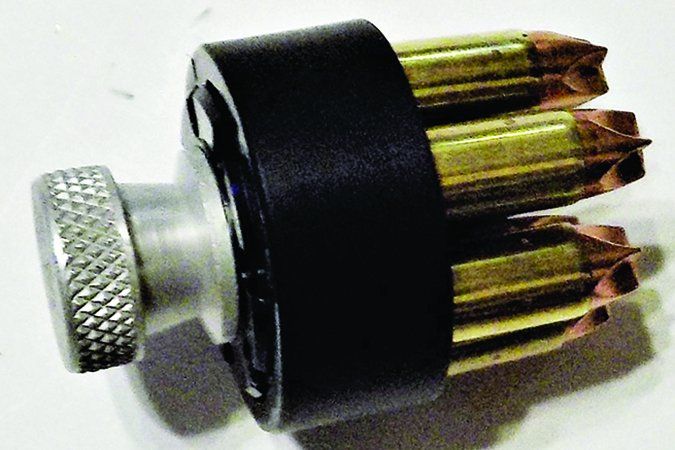
In the speed drills, the HKS was fast enough for personal defense. The user must practice extensively to get the speed load right with any of the designs tested. The HKS is slower than the Safariland and Speedbeez designs in loading the cartridges into the cylinder. The need to twist the knob rather than simply push forward to release the cartridges may be a speed demerit. However, the HKS design passed all drop tests, while the Speedbeez did not. Another important consideration is the number of speedloaders offered by HKS.
Available are loaders for 22-caliber revolvers, the 32 H&R Magnum, small-frame and large-frame revolvers, and the big 44s. The HKS is the only speedloader available in some applications. We compared the weight and diameter of only the six-shot 38 Special revolvers for a fair comparison. As the dimensions below show, there is no real size and weight advantage for any speedloader.
Our Team Said: The HKS is durable, affordable, and, with practice, it is fast. We rated the HKS down a half grade based on speed compared to the Safariland, which also passed the drop test.
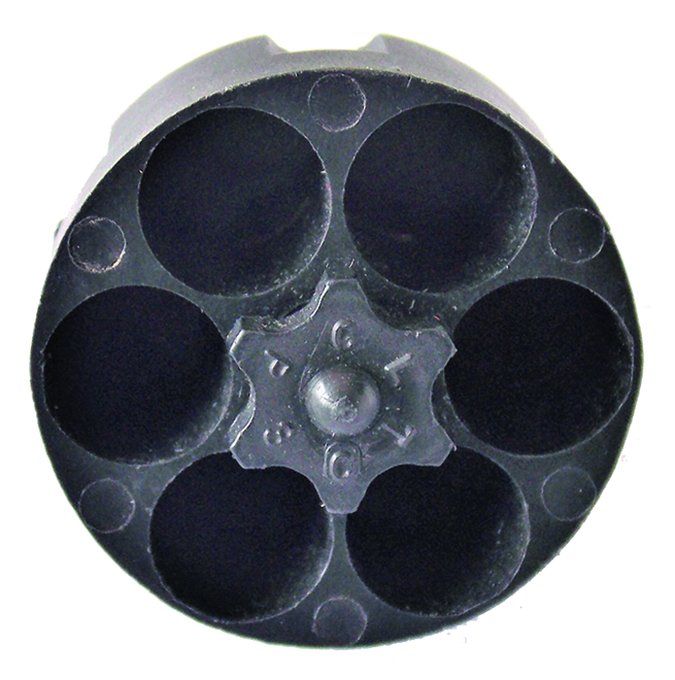
Safariland Six-Shot Speedloader, $12.68
GUN TESTS GRADE: A OUR PICK
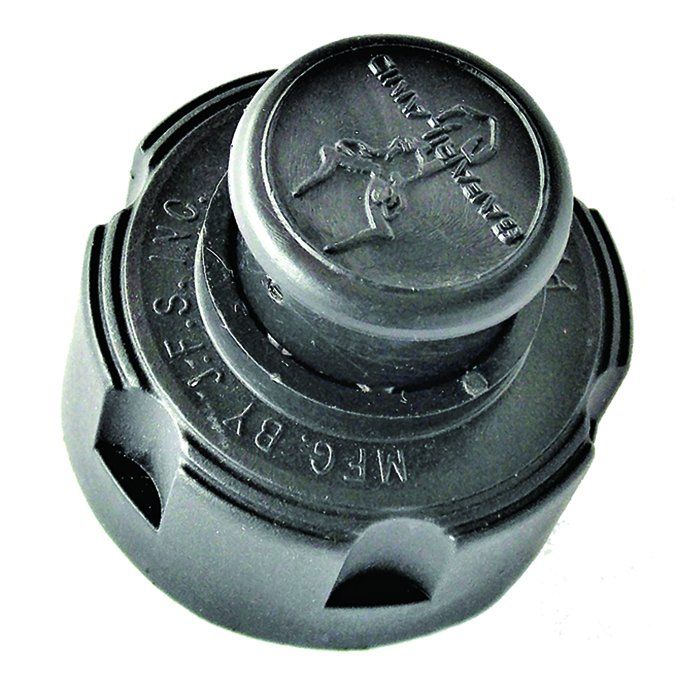
The Safariland speedloader is all plastic and seems durable. A set that one of the raters has had in use for perhaps a decade showed fraying and chips from being dropped around the outer edges, but it still worked fine. The Safariland loader differs from the HKS. There is no unlocked position achieved by turning the knob. If a gun load isn’t in the loader, it is unlocked. The ammunition is loaded, and the knob is pushed up and to the right. While we did not have access to the internals, this appears to spring-load the speedloader for a rapid release of the gun loads. We dropped several Safariland speedloaders and were not able to dislodge the gun load. We had on hand six loaders, and the total number of drops for loaded speedloaders was 18 without failure or losing the gun load. Loading in the revolver cylinder is the same as the HKS. The release is both different from the HKS and fast and positive. The cartridges are pressed into the chambers and the body of the Safariland loader is pressed forward. There is no turning of the knob; the gun load is released into the chambers without any other motion. The Safariland speedloader never failed to work properly in more than a dozen loads with each individual speedloader on hand. We like this system. A tiny bit more effort is needed to prepare the Safariland device, but loading the revolver with this speedloader is fast, positive, and natural. This advantage might be a lifesaver, and we like it very much.
Our Team Said: The Safariland costs more than the HKS, but the former is faster, and it costs less than speedloaders that do not work any better or do not work as well.
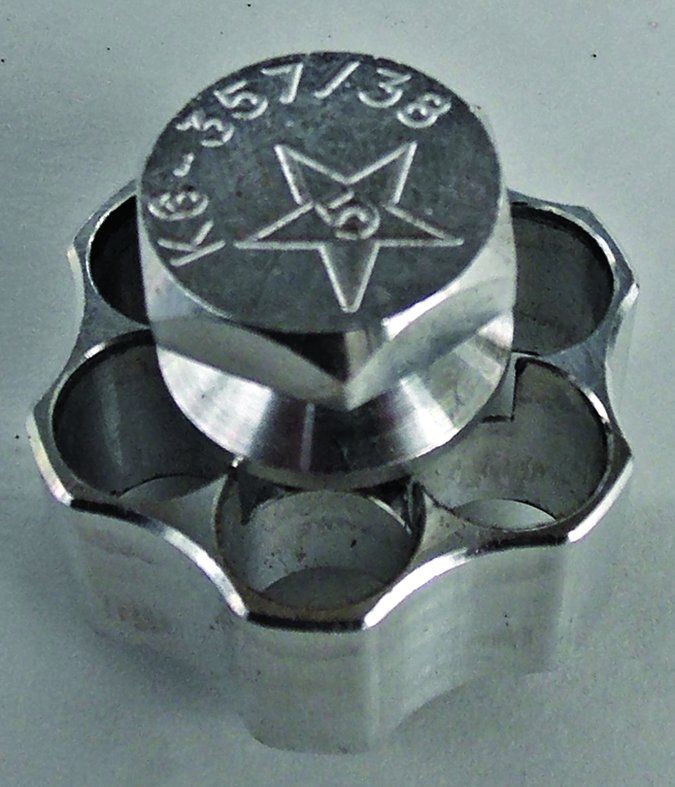
5 Star K6, $20
GUN TESTS GRADE: A-
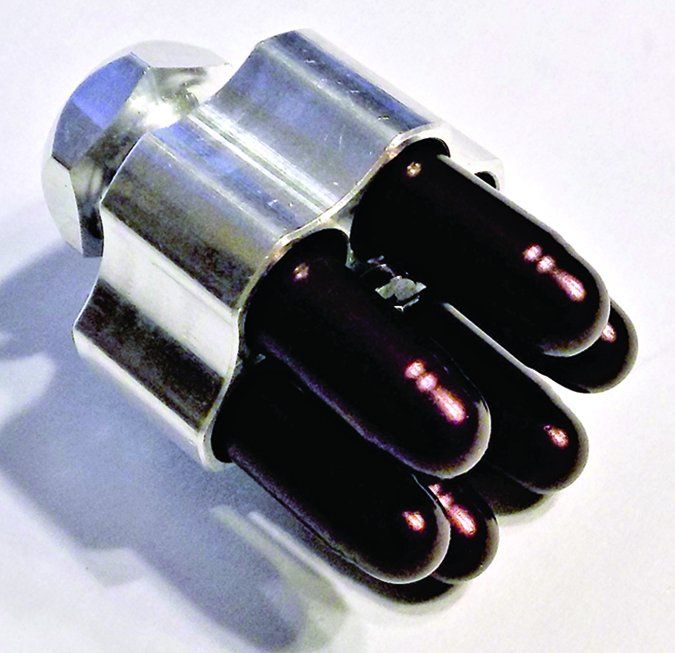
This unit is available at 5StarFirearms.com. The 5 Star unit is very similar to the HKS and also similar to the Pachmayr. The 5 Star is all aluminum. The 5 Star speedloader weighs the same as the HKS, 0.25 ounce more than the Safariland, 0.2 less than the Pachmayr and .5 ounce less than the Speedbeez. The 5 Star company offers good coverage, with 22-, 38-, 357-, and 44-caliber options, and even a speedloader for the Taurus Judge. The aluminum-body 5 Star device passed all drop testing. It loads in the same manner as the HKS and Pachmayr. The knob is not round but is instead scalloped. Since the HKS and Pachmayr are checkered, they have plenty of adhesion but the scalloped 5 Star doesn’t need checkering. We found no demerit nor disadvantage compared to the HKS design. In speed drills, the unit performed well.
Our Team Said: If you like the HKS, you will like the 5 Star, but you will pay more. We rated it down a half grade based on speed compared to the Safariland.
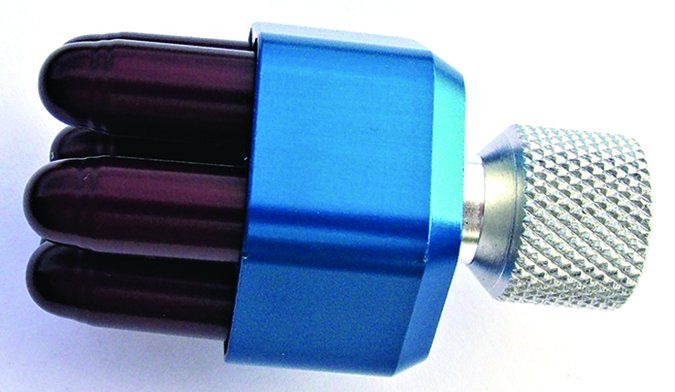
Pachmayr Competition Speedloader, $15.44
GUN TESTS GRADE: A
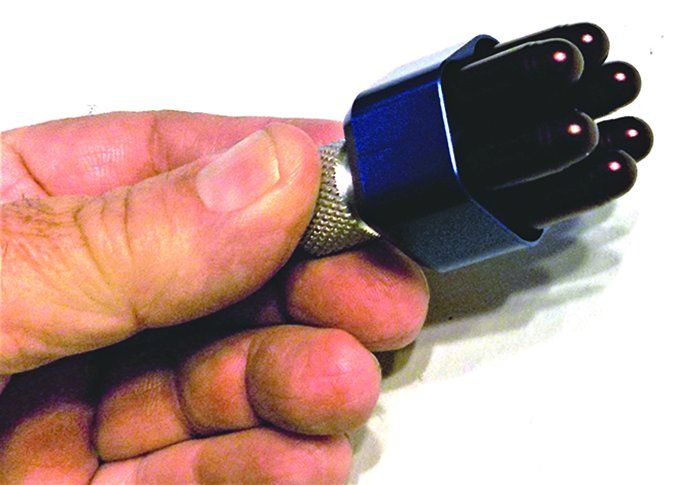
The Pachmayr speedloader operates in a similar manner to the HKS but features rubber washers that cushion the case head. There is little to no play of the loaded cartridges. The scalloped body makes the Pachmayr slightly smaller than the HKS, at 0.16 inch less diameter. We liked the scalloped design of the main body of the Pachmayr. The primary advantage over the HKS and 5 Star designs is a larger release knob that makes handling and speed incrementally superior. The unit is very smooth in operation and perhaps the best finished of any of the devices tested. While it costs more than similar designs, it also offers an advantage. The larger release knob had the Pachmayr running neck and neck with the Safariland for speed.
Our Team Said: This is a good quality speedloader with excellent finish.
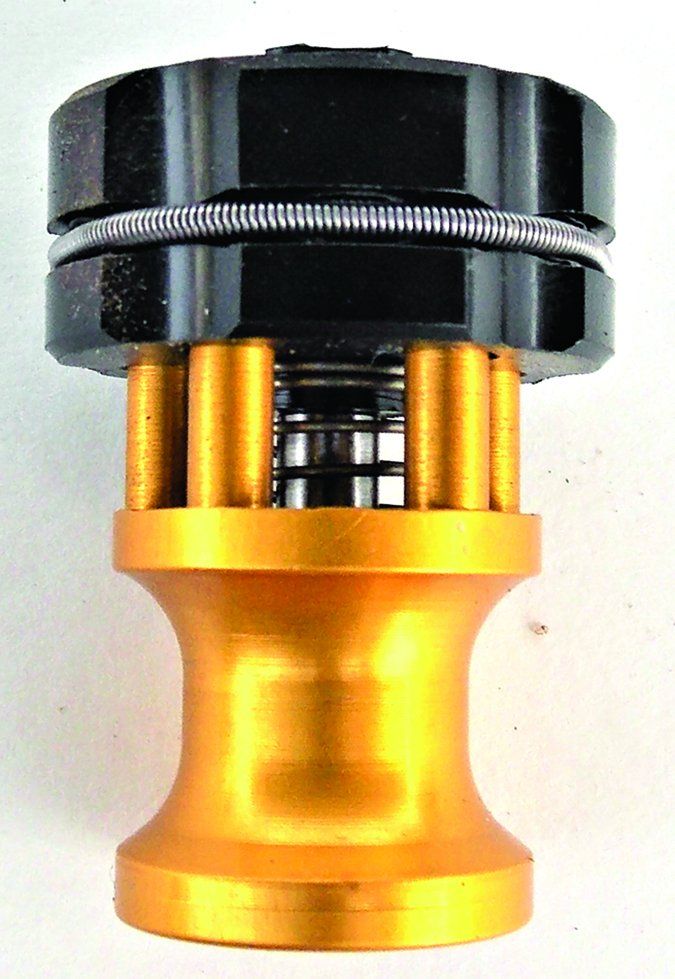
Speedbeez Speedloaders, $36 each
GUN TESTS GRADE: B-
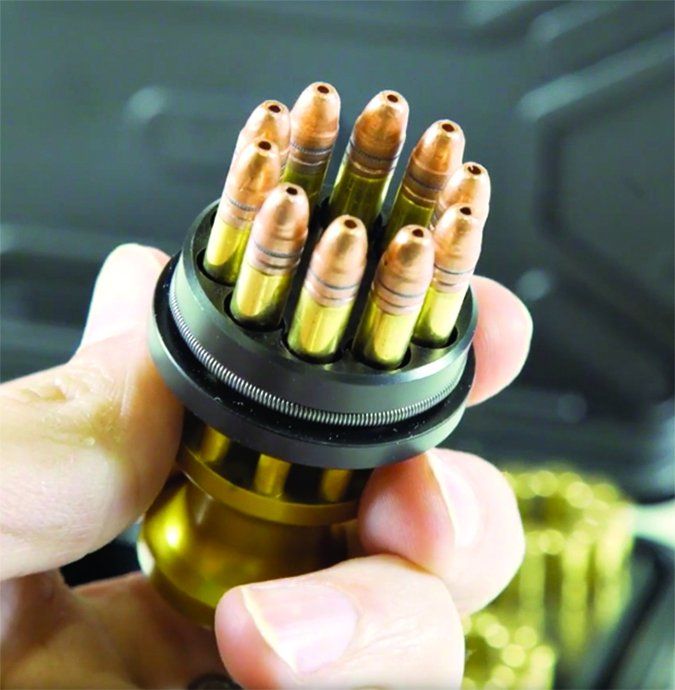
The different capacities include the SB 5 shot, SB 6 shot, and SB 7 shot, all available at Speedbeez.com. We tested several five-, six-, and seven-shot Speedbeez speedloaders. The company offers a large selection of the most popular types from 22 to 44 caliber. The Speedbeez is taller than the HKS and others tested and will not fit in the Galco speedloader pouch when the Speedbeez is loaded. This speedloader is loaded in a different manner than the other speedloaders. The cartridges are pushed into individual openings in the speedloader by finger pressure. The cartridge case rims are held by wire springs.
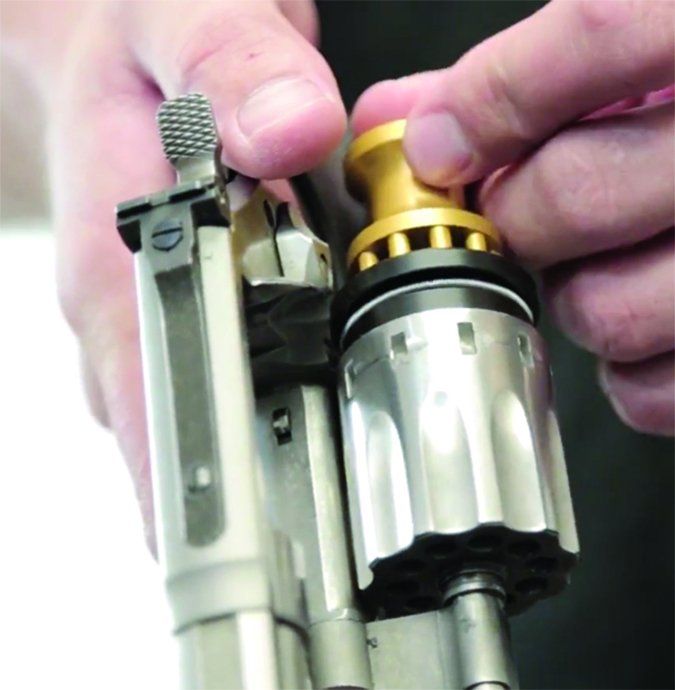
We shook the springs and did not lose the gun load when holding it above a desk, our initial test. When dropping the Speedbeez speedloaders, all except the five-shot speedloader lost the entire gun load on the first drop. We continued and did the full three drops, with the same results. The five-shot 38 Special speedloader lost two or three cartridges on average when dropped. We dropped it once, picked up the dropped cartridges, reloaded and tried again. The SpeedBeez was rated down a full grade based on this defect. This isn’t the most secure speedloader. When the cartridges are grasped by the nose, they may simply be plucked out of the speedloader. However, during the loading phase, the Speedbeez was the fastest revolver speedloader tested. Simply place the gun load in the cylinder and press the back of the speedloader and you are re-loaded. Let the Speedbeez fall away. We cannot stress enough how fast and easy this is.
Our Team Said: If you are certain you will not drop the Speedbeez, this is a very fast speedloader if this is the primary concern. In absolute terms of a split second, it is faster than the Safariland. In practical terms, in a personal-defense event, it might not be measurably faster. It lost its gun load during the drop test and might do so if carried in a jacket pocket, a common carry. Plus the Speedbeez is the most expensive speedloader tested, costing as much for one as for four HKS speedloaders.
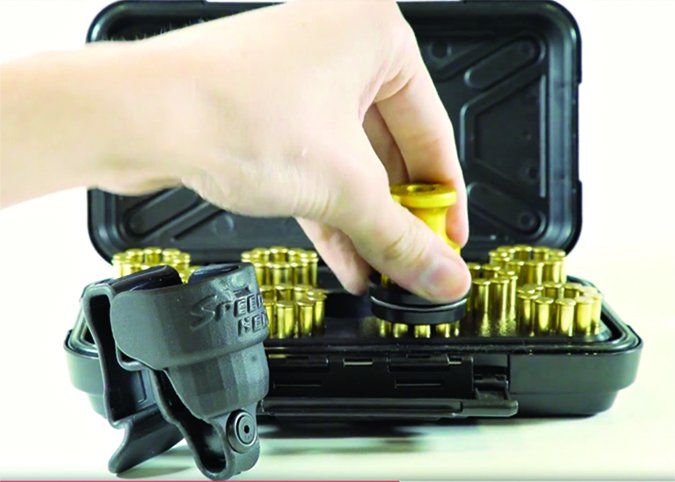
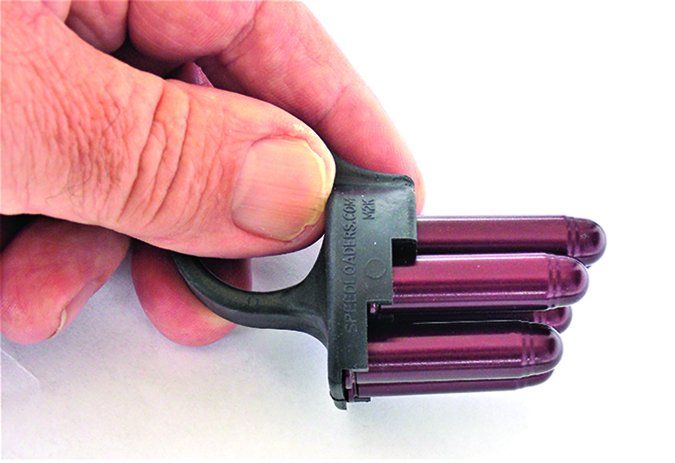
Maxfire Speedloader, $15
GUN TESTS GRADE: B-
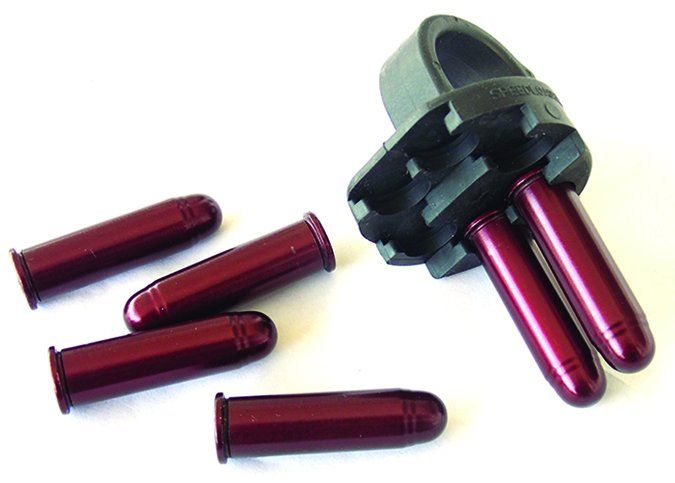
This speedloader is the least expensive tested, at $15 for a two-speedloader pack from MidwayUSA.com. The Maxfire is all rubber with no moving parts. The ring that is molded with the device is useful for carrying and when removing the loader from the gun load as it is chambered. The loading process isn’t difficult as the cartridges are placed in the loader and fitted into other the wedges molded into the Maxfire body. The load is staggered as the cartridges are locked into the Maxfire speedloader. We are so used to loading with the left hand holding the revolver and the right hand accessing and using the speedloader, the Maxfire loading procedure coming from the left side with the speedloader felt foreign. We spent more time on the Maxfire than the other loaders to be certain that wasn’t anything we were missing. If something feels odd, it is imperative that we continue with the test until it either feels better or continues to be odd despite our best efforts. After a thorough test, we found we could use the Maxfire in an efficient manner, but we preferred the other speedloaders. If the loader is properly used and pulled directly to the left, the load goes smoothly. If there is a snag, then the cartridges may be pulled out of the cylinder.
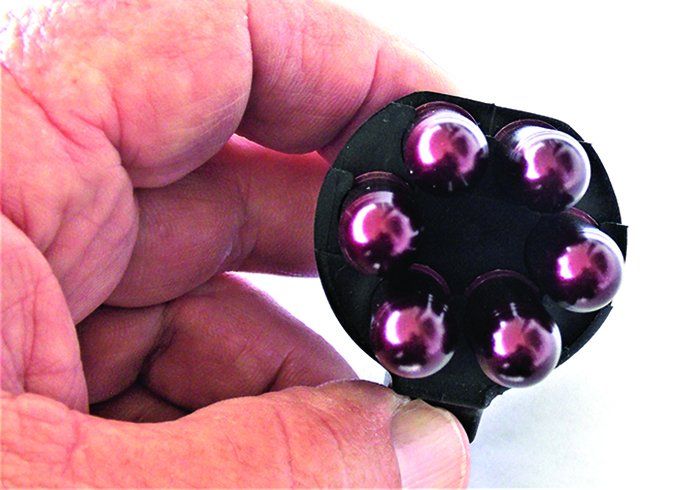
During the drop tests, the Maxfire speedloaders regularly lost part of the gun load. The tests were conducted from the same height as the other tests. We made three drops with each Maxfire speedloader. In four out of the six drops, the Maxfire lost four cartridges. The cartridges left were the two most forward cartridges. In a fifth drop, the Maxfire loader lost five cartridges. In another drop, the Maxfire loader landed dead on the cartridge noses and all of the cartridges were retained.
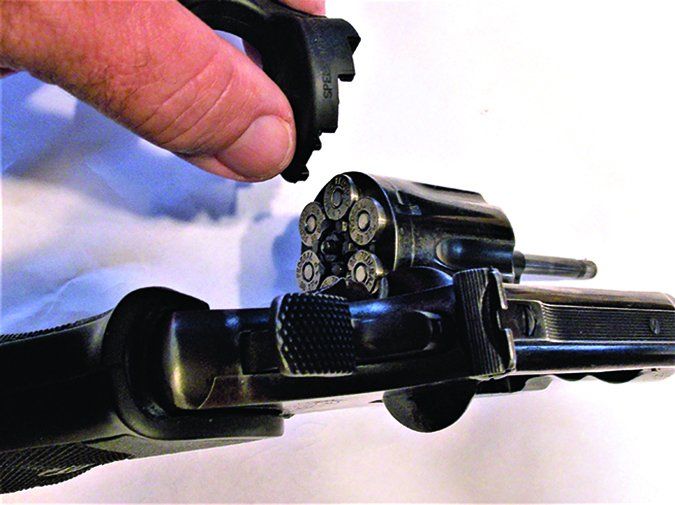
Our Team said: We rated the Maxfire down a grade as a result of poor drop tests. We rated it down another half grade based on the loading procedure. While the actual loading of the cylinder isn’t slow, we did not like the right hand on the revolver and left hand drawing the speedloader procedure.
Gun Tests Bottom Line
Three of the speedloaders operated in a nearly identical manner. The HKS, 5 Star, and Pachmayr gave good results. The Pachmayr fit into the Galco pouch in spite of a longer action knob. The Pachmayr is a good speedloader with limited coverage of popular calibers. Because we advise using consistent units, this is a factor.
We see no point in purchasing the 5 Star over the HKS due to the expense involved. The HKS is the Best Buy. The Safariland loader is the fastest in combat loads compared to the previous three of a similar design tested. The Speedbeez is a very fast unit, but it is expensive and does not hold its gunload when dropped. The Maxfire is inexpensive, about the same price for two as for a single HKS. We did not like the manual of arms, but if your budget is small, this is an option. We did not like its failure on the drop test.
Whichever speedloader you choose, stick with the type. It was inevitable that during the testing, some raters became confused when switching between different styles of speedloaders. It would be a disaster to use the Speedbeez in competition, we believe, and then the HKS for concealed carry, or vice versa. You should be familiar with the gear you use. If you concealed carry the HKS, use it in competition, and if you compete with the Speedbeez, carry it for personal defense. After our test, we prefer the Safariland speedloader. The Pachmayr, on a tactical basis, is a close second for personal defense. The HKS is the Best Buy based on price, value, and coverage.
Written and photographed by Gun Tests Staff.





























Excellent review of the speedloader as a ccw trainer I make my students do repetition training until they DON’T DROP IT